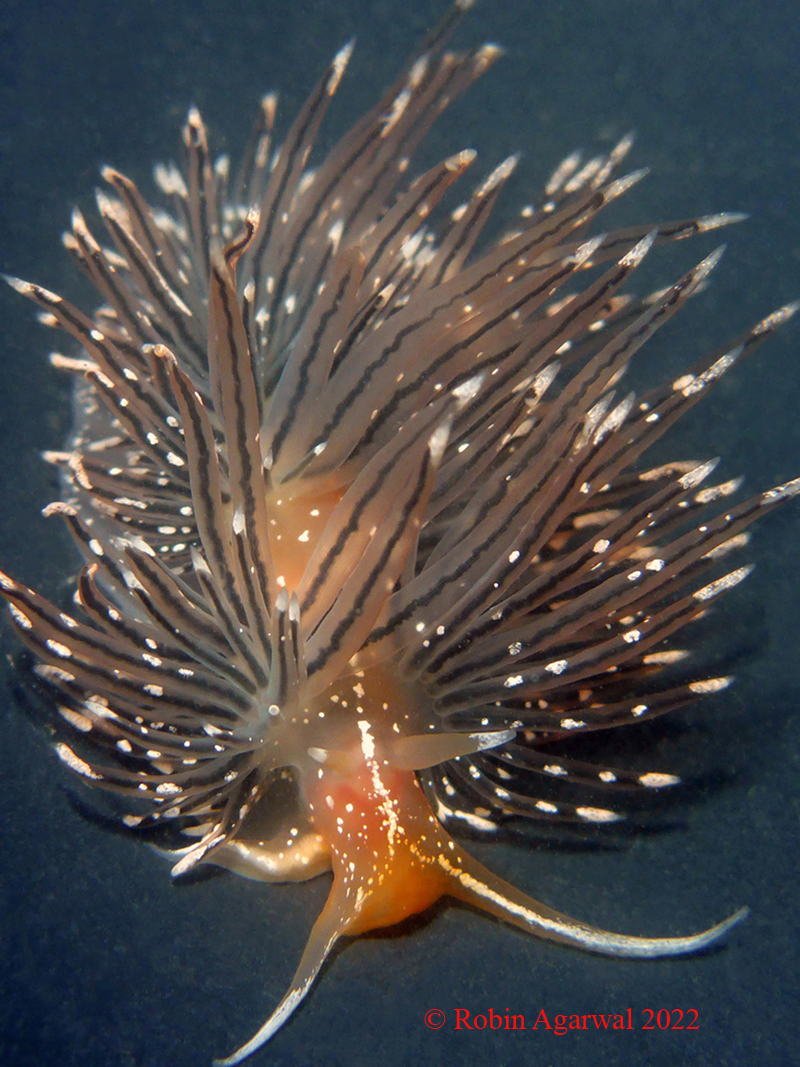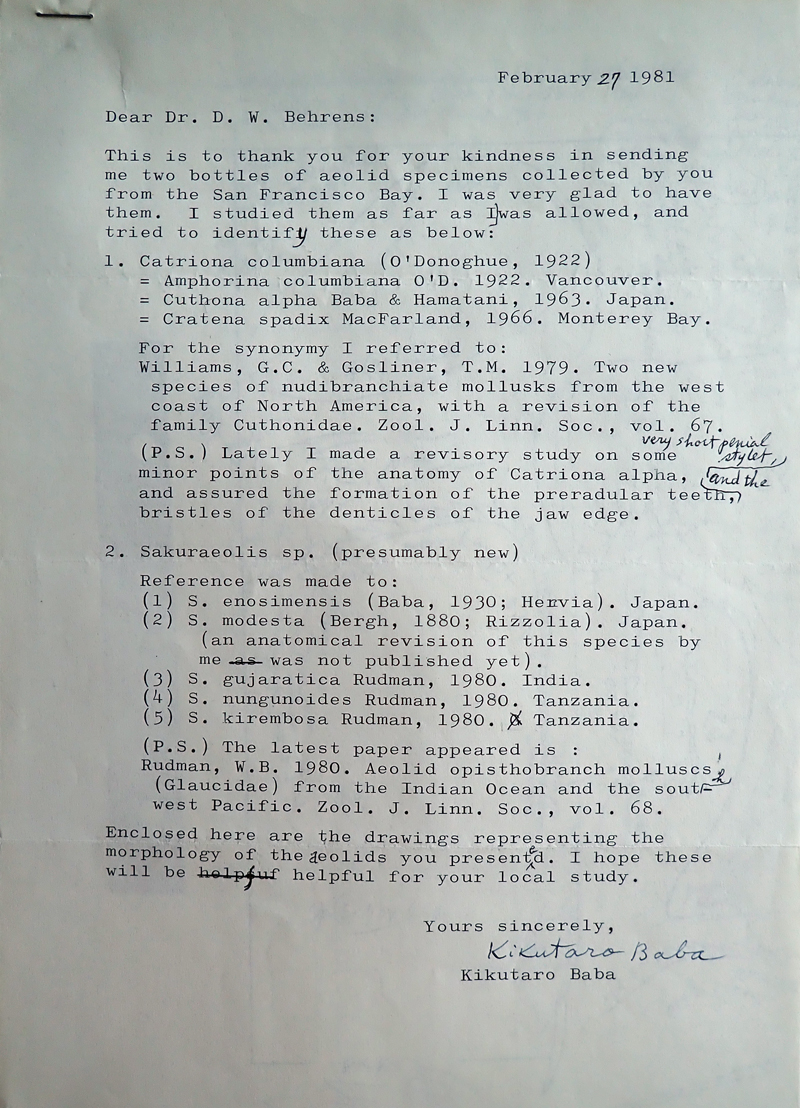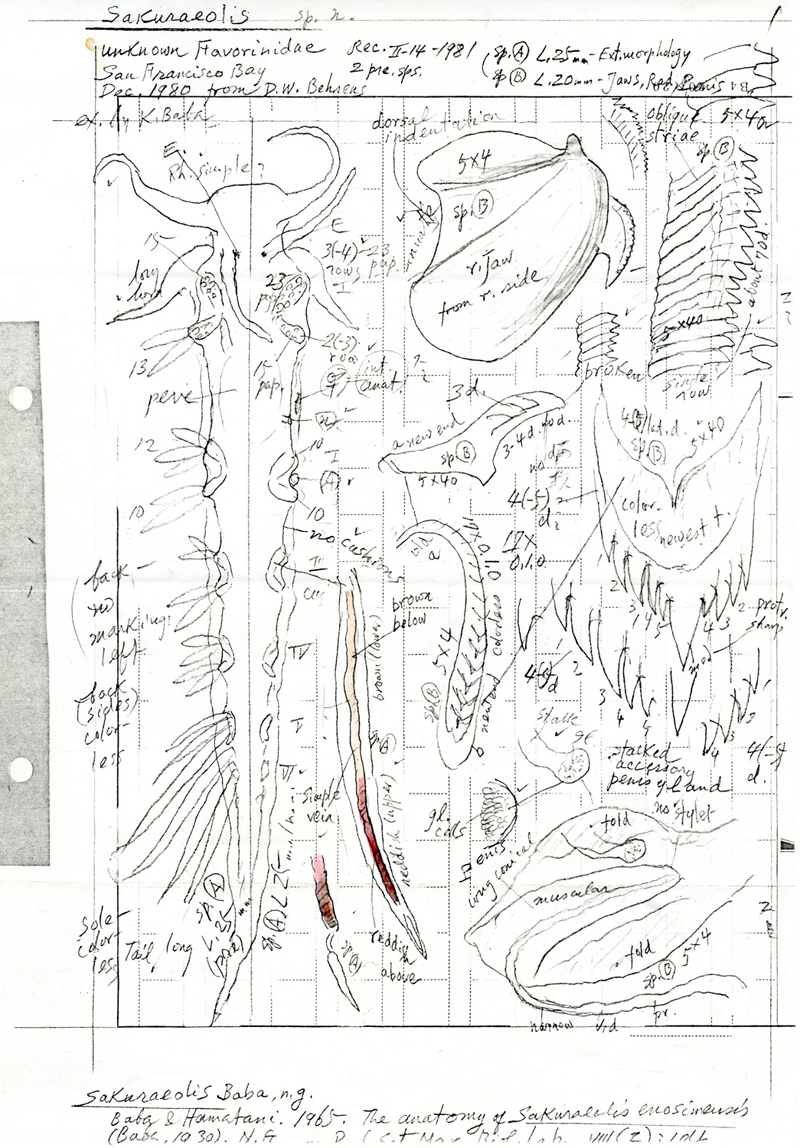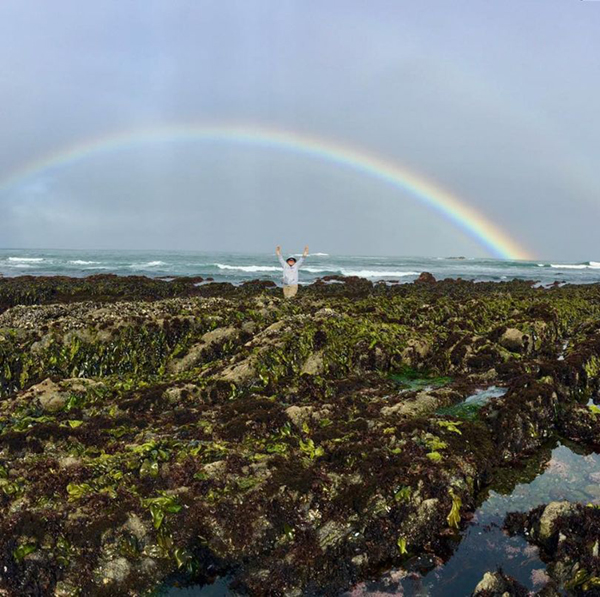 |
Sakuraeolis enosimensis (Baba 1930) or not?
Image courtesy of Robin Agarwal
San Francisco Bay, California
During our efforts to revise Eastern Pacific Nudibranchs, my coauthors Karin Fletcher, Greg Jensen and Ali Hermosillo have identified a number of species of questionable identification in the previous edition, and we are striving to correct these oversights. With the knowledge of genetic analysis which was not available 17 years ago when the second edition was published we are now able to place more accurate bounds around species. Sakuraeolis enosimensis is one of them.
DWB note: BOW 1124 - Sakuraeolis enosimensis is in error. My mistake. We attempt to correct it here.
Dr. Kikutaro Baba described Sakuraeolis enosimensis from specimens collected by aspiring marine biologist and the Emperor of Japan, Emperor Hirohito. His specimens were collected in Enosima, Japan, near Sagami Bay and originally placed the species in the genus Hervia. Sakuraeolis enosimensis has a long, slender body, with the tail forming about 1/4 of the body length. Its oral tentacles are long, slender and tapering. The anterior corners of the foot are extended to form horn-like projections. The rhinophores are smooth and shorter than the oral tentacles. The cerata rise from 6-8 arch-shaped pads, in 2-3 rows, except for the posterior two arches, which bear a single row of cerata. The cerata are simple, smooth, and dense, with the longest, in the mid-dorsal region, reaching up to one-half the body length. The animal can reach 45 mm in length, but is more usually 25-30 mm. The color is highly variable, but the basic color of the body is translucent yellow. Sometimes, there are yellow-orange speckles on the head. The liver and its branches usually range from yellow-orange to reddish-brown, but can sometimes be green. The oral tentacles and the tail are marked with an opaque white mid-line, while the rhinophores and cerata have white tips, and the head is also speckled with white.
I sent specimens to Dr. Baba back in the 70's asking for his opinion and he returned these amazing water color drawings One Two Three of the dissected specimen with confirmation of its identification in the genus Sakuraeolis. Dr. Baba's passion for the animals (see (Bertsch, 1993),) is reflected in the fine detail of his drawings. Remember, this is before scanning electron microscopes and protein and DNA sequencing.
Since that time, Karin Fletcher has provided us with genetic information suggesting that the San Francisco Bay specimens are not the S. enosimensis, found in Japan, but a new undescribed species has appeared in a paper describing a new Sakuraeolis species from Mozambique. See the phylogenetic tree below (from: Ellis-Diamond, et al., 2021).

|
|

|
|

|
|
Baba, K. 1949. Opisthobranchia of Sagami Bay: Collected by His Majesty the Emperor of Japan. Iwanami Shoten, Japan.
Behrens, D. W. 1982. Sakuraeolis enosimensis (Baba, 1930) (Nudibranchia: Aeolidacea) in San Francisco Bay. The Veliger, 24(4): 359-363.
Bertsch H. 1993. Japanese contributions to Opisthobranch research with special reference to Tako Abe.Iwao Tia\Iatani,and Kikutaro Baba.
Abstracts and Proceedings of the Annual Meeting Held at Asilomar Conference Center Pacific Grove, California 30 June - 3 July 1992 BA
Ellis-Diamond, D.C.; B.E. Picton; Y.ibirica and J.D. Sigwart. 2021. A new species of Sakuraeolis from Mozambique described using 3D reconstruction of anatomy and phylogenetic analysis. Journal of Molluscan Studies, Volume 87, Issue 2
Sammamish, WA 98074
Mar., 2022
Send Dave email at davidwbehrens@gmail.com

I don't dive. And I don't own an unwieldy,expensive underwater camera rig. What I do is peer into tidepools and hang my head over the side of floating docks, hoping to spot a nudibranch and get a few snaps with the trusty little point-and-shoot, underwater macro camera that fits in my pocket. I was a tidepool kid who went astray and graduated with a liberal arts degree. In the last decade, I've returned to the tidepools and found a particular passion for photographing nudibranchs and other intertidal marine life. I'm co-editor of the California Sea Slugs Guide on iNaturalist.org, where I have posted about 4,000 geotagged observations of nudibranchs, mostly along the Central California coast. Since I offer all my photos free to non-profit organizations (my way of thanking them for the work they do), you can find them all over the internet as well as Bay Nature magazine and NOAA National Marine Sanctuary informational signage. I've also been an enthusiastic contributor to a few scientific papers on nudibranchs, such as Heterobranch Sea Slug Range Shifts in the Northeast Pacific Ocean Associated with the 2015-16 El Nino by Goddard et al. (2018). Cheers, Robin Agarwal
Send Robin email at robingwenagarwal@gmail.com |

|
